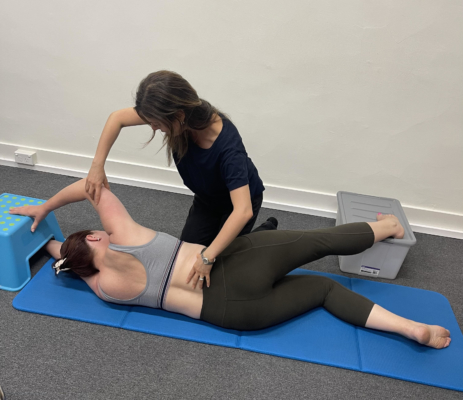Scoliosis Management

Scolisis Psse
Our Scoliosis Program is based on our international training in the ‘BSPTS-Concept by Rigo’ qualification. This is one of the most effective methods for non surgical management of scoliosis.

The BSPTS is based on the original Schroth method but has since expanded to become an even more effective method for managing scoliosis.
Our Scoliosis Program centres around two main aspects:
- Thorough diagnostic assessment
- PSSE (Physiotherapy Specific Scoliosis Exercises)
The assessment includes specific scoliosis screening as well as elements of our full body diagnostic assessment. We will look at the following:
- Detailed general history (medical history, scoliosis specific history, your specific goals)
- Diagnosis of structural vs functional scoliosis
- X-Ray assessment where necessary
- Postural assessment
- Range of motion testing of the spine and joints as well as ligament integrity testing
- Lung function assessment (Spirometry)
This will allow us to correctly diagnose firstly whether you actually have scoliosis and if yes, which type it is. It will also help us to determine general areas of strength and weakness.

Following the assessment we will be able to recommend the most appropriate management. This can involve the following:
- PSSE (Physiotherapy Specific Scoliosis Exercises)
- Bracing (if needed); we will refer you to a specialist for that
- Referral to an orthopedic surgeon (if needed); we have a great network of highly experienced orthopedic surgeons we refer to
- Clinical Pilates
- Specifc home exercise program
- Ergonomic advise (work/study setup, sitting posture, schoolbag/handbag carrying etc)
Recommendations are made following the Guidelines produced by SOSORT (International Scientific Society on Scoliosis Orthopaedic and Rehabilitation), and the SRS (Scoliosis Research Society).

PSSE (Physiotherapy Specific Scoliosis Exercises)
This method revolves around the concept of expanding the areas of the body which are collapsed due to scoliosis. This creates the necessary "space" to enable those areas of the spine which have been displaced due to the curvature to go back into optimal alignment. Thus the first step is to improve the shape, while the second step is to create the endurance necessary to translate this correct shape into:
- Static postures (lying down, sitting, standing)
- Dynamic postures and normal everyday activities (lifting, carrying, walking, sport, work etc)
Besides PSSE we also utilise specific home exercise programs and where necessary Clinical Pilates. We use Real Time Ultrasound as an effective biofeedback tool to assess the strength and control of the core muscles and make sure that you are engaging them correctly.
Clinical Pilates helps to train the core muscles, improve posture and address any other issues we find during the assessment. We incorporate elements of PSSE into our Clinical Pilates classes for patients with scoliosis. This serves as further training to enable you to carry over the postures you learn with PSSE into normal daily activities.
